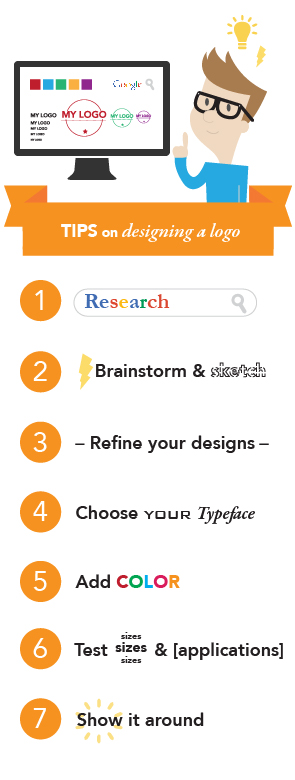Creating a logo can be one of the most challenging tasks facing a designer, and rightfully so. An entire brand's identity relies heavily on their logo--it's difficult to establish a strong brand without a powerful logo as its foundation. By following these tips, you will be better equipped to accomplish each logo project.
1. Research.
The first vital step towards logo design is to delve into the company you're branding, as well as its competition. What do the logos of the most successful companies in the same field have in common? The goal is to make the logo stand out among its competitors without looking like it's in a completely different industry altogether. Knowing the mission statement and services of the company you're branding is also important. Putting yourself in both the client's shoes and their target audience will help you better understand what they're looking for in a logo.
2. Brainstorm and sketch.
Sometimes it's easy to skip the drawing step and jump straight into Illustrator, but sketching your potential ideas onto paper is an important step in creating the most successful logos. Do you have a vision that's stuck in your head and clouding all the great ideas? Sketch it out, see if it will work, then move on. Get inspired by the logos you've researched, but be careful not to copy them too closely.
3. Refine your designs. Then refine them some more.
Translate the best ideas onto the computer whichever way you prefer. Some may scan and trace, while others are more comfortable using their sketches as a rough reference and recreating them in vector form. More often than not, your ideas will start out with more details than necessary. Branding an ice cream company? Try to refrain from a literal ice cream cone, complete with sprinkles and a cherry on top. The public is more likely to recognize an iconic, bold shape over one cluttered with details; subtract as much as possible.
4. Choose your typeface carefully.
A good logo is the sum of all its parts, with the typeface being a large portion of it. This is why it's crucial to avoid gimmicky fonts that will make the logo stand out in an undesirable way. Instead, make a few slight customizations of a legible, timeless font to achieve greater impact. Additionally, because logos are such a small design area, limit your logo to two fonts.
5. Add color.
After designing a logo that is strong in black and white, apply color to make your design come to life. Be mindful of color psychologies and appropriate color schemes for the industry. Again, limit your colors to a few hues, because too many colors can be overwhelming and costly to print. Whatever colors you choose, please avoid using gradients or raster effects.
6. Test at different sizes and applications.
Most clients will be scaling their logo from less than one inch to multiple feet wide. Therefore, designing a logo that works at a wide range of sizes is imperative. Additionally, creating a logo that's an irregular shape likely won't work when applied to every medium. A really vertical logo, for instance, may look amazing and attract attention, but will potentially cause layout issues when applying to various applications.
7. Show it around.
Feedback is essential when it comes to logo design. Sometimes when designing, you work so closely that you could miss a glaring atrocity that most people will recognize. Aim to show your logo to not only fellow designers, but to the general public and ideally, the target audience of the company. Be mindful of the responses, but stick to your convictions as a designer when it comes to the more subjective elements of the logo.
Utilizing these logo design tips will help you on your path to creating impactful logos that will keep clients happy for decades.

